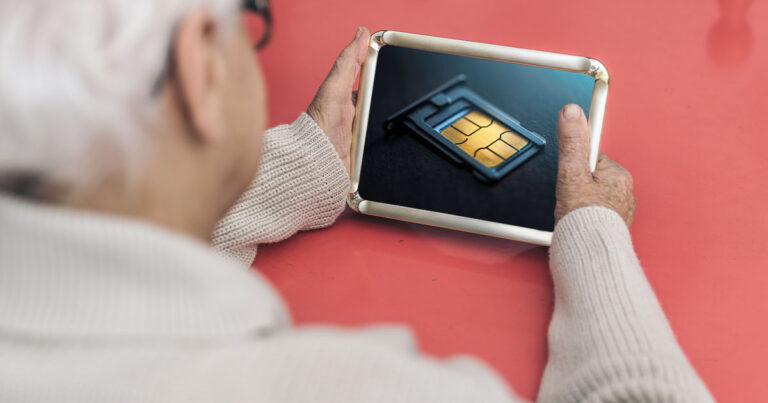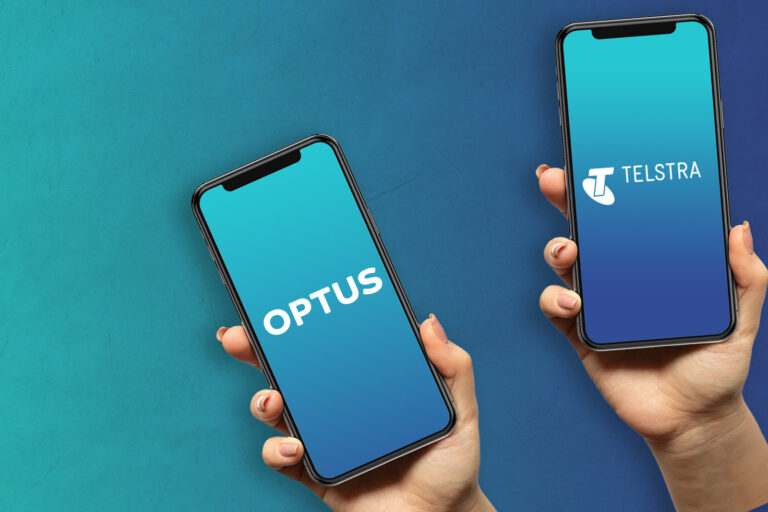Digital SIM wars.
Telstra eSIM vs Optus eSIM: What’s the difference?
Telstra and Optus are big rivals when it comes to all things telecommunications. The duo battle over the best phone plans. They war over the best NBN plans. They compete on coverage, and they even brawl over other forms of broadband like 5G home internet.
With that in mind, it's no surprise that both Telstra and Optus are looking to put their respective spins on the newfangled eSIM craze. While there are some differences between the duo, many of those differences aren’t as big as you might think.
Here's the low down on what an eSIM is, what devices support eSIM, which Telstra and Optus postpaid and prepaid plans are available on eSIM and how to set up eSIM with either of Australia biggest mobile providers.
An eSIM is a digital replacement for a physical SIM card. Many newer-model smartphones are eSIM compatible, but you need an eSIM provider to use the function, which also frees up your physical SIM card for converting your phone into an ad hoc dual-SIM phone. In Australia, Telstra, Optus, Vodafone and Gomo support eSIMs. Those signing up for an eSIM plan can choose from the same range of options than those using physical SIM cards.

eSIM devices
Telstra vs Optus
Before you can even dive into an eSIM mobile plan, you’re going to need an eSIM-compatible handset.
Telstra puts the responsibility back on you to ensure you have a device with an “eSIM symbol” to confirm its eSIM compatibility. That’s not overly helpful, Telstra.
Thankfully, Optus offers a list of eSIM-compatible devices to use as a guide:
Apple eSIM devices
Samsung eSIM devices
- Samsung Galaxy Fold
- Samsung Galaxy S20 5G generation
- Samsung Galaxy Note 20 5G generation
- Samsung Galaxy S21 5G generation
- Samsung Galaxy S22 generation
- Samsung Galaxy Z Fold 2 and Z Flip
- Samsung Galaxy Z Fold 3 and Z Flip 3
- Samsung Galaxy Z Fold 4 and Z Flip 4
Google eSIM devices
- Google Pixel 4/4 XL
- Google Pixel 5
- Google Pixel 6
- Google Pixel 7
Though that list is helpful, it’s not an exhaustive breakdown of eSIM-compatible phones and other devices. The bottom line is you should check with Optus or Telstra before signing up if you’re interested in using an eSIM for your device.

Telstra vs Optus Mobile: 5G, plans, coverage and value
We pit Australia’s two largest mobile network operators against each other.
eSIM plans
Telstra vs Optus
Remember that the main difference between an eSIM and a SIM card is one is digital and the other is physical, which means there aren’t any differences in the plans you can sign up for.
Telstra eSIM plans
Below is a daily updating list of popular postpaid Telstra mobile plans that support eSIM:
Optus eSIM plans
And below is a list of popular postpaid Optus mobile plans that support eSIM:
Prepaid Telstra eSIM plans
Here is a list of prepaid Telstra plans that support eSIM:
Prepaid Optus eSIM plans
Here is a list of prepaid Optus plans that support eSIM:
eSIM setup
Telstra eSIM setup
Here’s what you need to do to prep your eSIM-compatible handset for use with Telstra:
- Connect your eSIM-compatible handset to WiFi for configuration.
- Now use the camera on your device to scan the Telstra eSIM Card’s QR code. Follow the prompts to finalise configuration.
- For manual prep on an iOS device, head to Settings on your device. Go to Mobile and then ‘Add Mobile Plan’. Scan the Telstra eSIM Card’s QR code and follow the setup prompts.
- For manual prep on an Android device, head to Settings, then ‘Network & Internet’ and finally ‘Mobile Network’. On this page, scan the Telstra eSIM Card’s QR code and follow the configuration prompts.
- If your Telstra eSIM isn’t already activated, head to the Telstra activation page to start using mobile services.
Optus eSIM setup
And here are the steps to take with an eSIM-compatible device for use with Optus:
- Connect your eSIM-compatible handset to WiFi for configuration.
- Download and install the My Optus app. Log in with your account credentials, then select ‘More’ from the main menu. Go to ‘eSIM’ and ‘Set up my eSIM’.
- Follow the prompts, selecting ‘Download eSIM’ followed by ‘Confirm’ and ‘Add Mobile Plan’. Finally, tap ‘Continue’ to download your Optus eSIM.
- Activate and deactivate flight mode on your eSIM-compatible device, or restart it to activate the Optus service.
- For a streamlined alternative, just scan the QR Optus code Optus provides and tap on the link that pops up.
eSIM FAQ
These days, changing to a Telstra eSIM online is probably easier than you think.
If you're with a mobile provider (like Optus or Telstra) that offers eSIM connectivity, swapping out your physical SIM card for an electronic one can be done online via an app, over the phone or in-person at a physical store.
Trading in or swapping from a physical SIM card to an eSIM through both Optus and Telstra won't cost you anything on top of whatever you're already paying for your prepaid or postpaid mobile plan.
Both Telstra and Optus offer eSIM on prepaid plans. In both situations, you'll first need to sign up for a prepaid plan using a physical SIM. Then, once you're set up, you can swap to an eSIM using either providers respective apps, customer support phone lines or physical stores.
There are three main arguments for why an eSIM is better than a physical one. The first is that since there's no longer any card-swapping involved, you can shift between telcos that much faster. So long as the provider you're changing to supports eSIM, anyway.
The second benefit that eSIM offers is that it can effectively turn a single SIM handset into a dual-SIM. Swapping to eSIM will free up the physical card slot inside your device. What happens next is up to you.
Last but not least, eSIM also offers benefits to those using wearables like the Apple Watch as it allows you to share the same mobile number across both your smartphone and select smartwatches.
Related Articles



